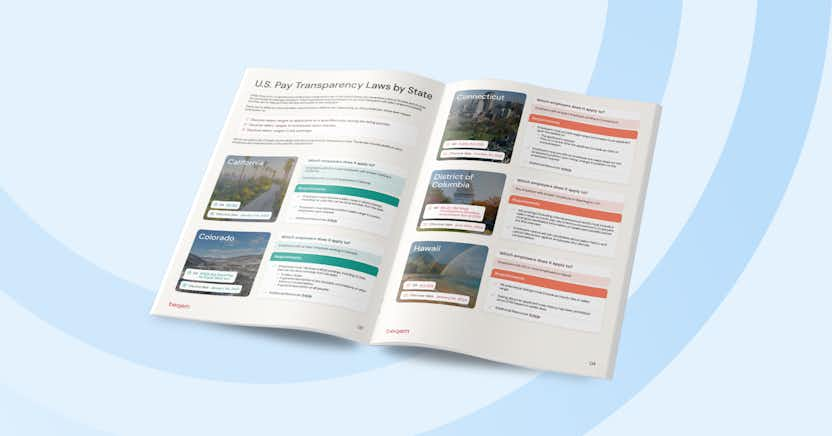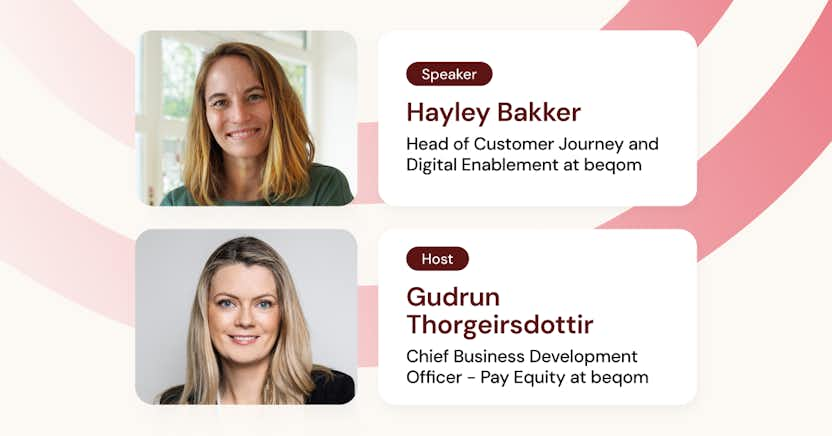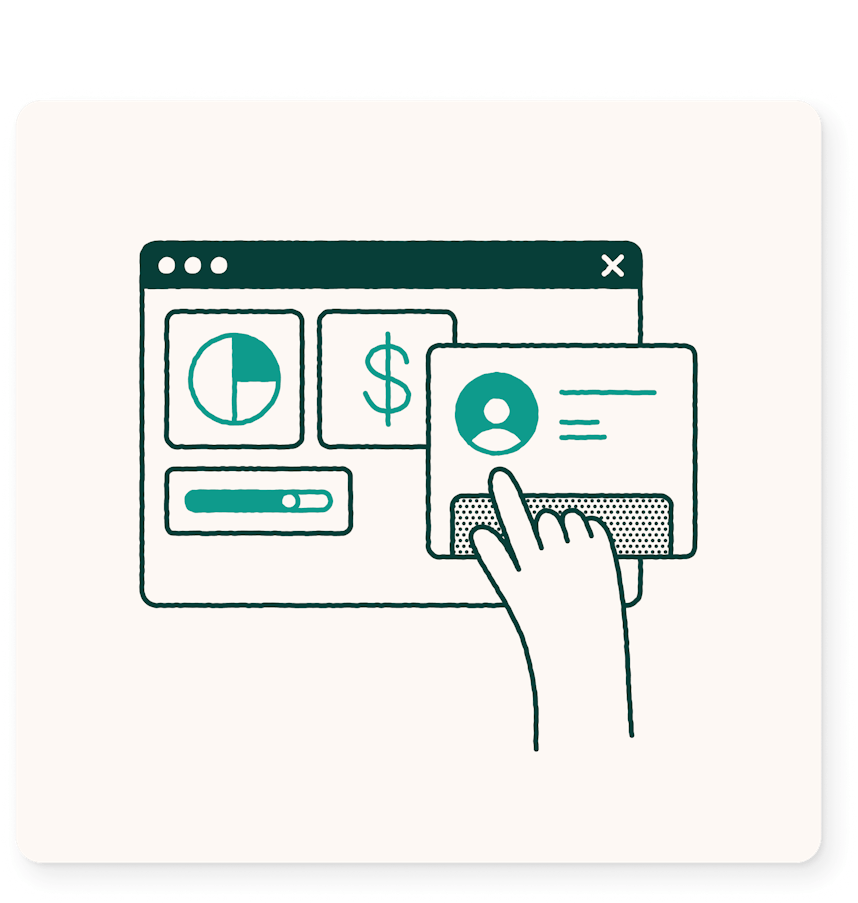A Guide to People Analytics: What Are They and How to Use Them

Products used
HR teams often use data analysis to uncover issues, improve decision-making, and support the long-term success of their organization. People analytics is a form of advanced data analysis often that has the potential to transform how organizations manage their workforce.
The main goal of people analytics is to improve employee engagement, experiences, and performance. With the data gathered from people analytics processes, HR teams can identify potential risks, engagement drivers, DEI opportunities, well-being issues, and shortcomings in existing processes.
Follow this comprehensive guide to discover the purpose, benefits, process, applications, and considerations of people analytics to learn how to effectively utilize it within your organization.
What is people analytics?
People analytics involves the collection, tracking, and reporting of key metrics related to a company’s work culture and employees. By gathering and analyzing data, you can uncover trends regarding employee experiences and behaviors. These insights not only inform business decisions but also contribute to creating a more effective and positive work environment.
The importance of people analytics
People analytics, alongside other forms of analytics, contributes to an evidence-based HR approach, which improves decision-making, optimizes resource management, and facilitates organizational growth.
Gathered data also enables HR teams to understand the reasons behind certain employee decisions and actions. For instance, if other analytics approaches reveal a pattern where employees of a specific tenure are leaving the organization, people analytics can provide valuable insights to identify the underlying cause.
By examining the collected data, HR might discover that dissatisfaction stems from compensation and bonus practices. With this information, HR teams can implement targeted interventions to address and resolve the issue.
Workforce analytics vs people analytics
People analytics and workforce analytics are often used interchangeably, but HR can establish a more nuanced and detailed approach to managing and understanding employees if they are categorized separately.
Workforce analytics can be distinguished as an approach that focuses on operational metrics relative to staffing, productivity, and overall efficiency. This approach focuses on data such as turnover rates, labor costs, and workforce demographics. It aims to provide insights into broad trends and operational effectiveness, helping organizations make strategic decisions related to recruitment, cost management, and resource allocation.
In contrast, people analytics takes a closer look at each individual and team within the company and how their experiences, engagement levels, wellness, development, and behaviors influence the organization.
With insight into workforce analytics, organizations can ensure equitable compensation, create new incentive opportunities, and make data-driven hiring decisions.
Alternatively, with insight gained from people analytics, organizations can determine how to create a positive work environment to support their employees and facilitate their personal and professional growth, improving the organization’s customer satisfaction and productivity levels.
People analytics - trackable data
Here are key examples of data that can be tracked through people analytics:
Behavioral trends
Behavioral trends include data that are related to how employees interact independently, in a team environment, and across different departments.
Behavioral trend data can uncover how often and to what extent employees communicate and collaborate with each other, how they participate in team activities, their responsiveness to feedback, and their adherence to company policies.
Other work habits can also be tracked as part of behavioral trends in people analytics, such as:
- Attendance;
- Tardiness;
- Ability to meet deadlines;
- Time management;
- Participation in meetings;
- Proactiveness in responsibilities.
With this data, HR teams can better understand the collaboration dynamics that influence productivity and uncover gaps in communication that need to be addressed to strengthen employee relationships. Individual work habits can also reveal signs of burnout or a lack of motivation, where employees may fail to meet deadlines or are frequently late.
Career development
Career development data, such as attendance at training sessions and participation in professional development programs, helps HR assess each employee’s commitment to skill enhancement and readiness for career advancement.
For example, an employee who regularly attends leadership workshops and achieves high completion rates demonstrates a strong interest in career progression, potentially qualifying them for future leadership roles.
This data can be combined with workforce analytics related to employee performance to identify high-potential employees and evaluate the impact of existing training programs, ensuring that all employees are adequately supported to grow and develop within their roles.
Employee well-being
Tracking metrics related to well-being, such as employee stress levels, job satisfaction, work-life balance, and access to wellness programs, can provide valuable insights into the factors affecting employee’s overall quality of life.
With this data, HR teams can address potential issues proactively, offering support such as workload adjustments, mental health resources, flexible work arrangements, or wellness initiatives.
These actions and initiatives can aid the organization’s talent retention efforts by addressing potential root causes of turnover and providing employees with compelling reasons to stay by creating a supportive and positive work environment. This approach also reduces the need to rely solely on paid incentives to retain staff, as it helps to create a more engaged and satisfied workforce through non-monetary measures.
Benefits of people analytics
The key benefits of implementing people analytics in your organization include:
- Improved decision-making: Gathered data helps HR teams take targeted action and make data-driven decisions that are backed by evidence.
- Enhanced employee experience: By having their needs, concerns, and ideas considered and acted upon, employees will have a better experience in your organization, improving satisfaction levels and boosting morale. A focus on people analytics also makes employees feel ‘heard,’ further enhancing their contentment.
- Increased productivity and efficiency: When actions are taken based on insights gathered directly from employees, the outcomes are more likely to align with their needs and preferences, resulting in a more motivated and effective workforce.
- Better alignment with organizational strategy: People analytics ensure that HR initiatives and employee development align with the organization’s strategic goals. By analyzing performance, skills, and career progression data, HR can synchronize employee contributions with business objectives.
The people analytics process
Follow this guide to implement people analytics within your organization -
1️⃣ Identifying relevant data
The first step in the people analytics process is identifying relevant data by determining key performance indicators (KPIs) that align with business goals.
Once these KPIs are defined, the next step is selecting the most impactful data sources. For example, qualitative data related to employee opinions, behaviors, and concerns can be gathered through sources such as performance reviews, one-on-one meetings, suggestion boxes, stay interviews, exit interviews, and surveys.
Other viable data sources for people analytics include performance management systems, training records, collaboration tools, and absenteeism records.
2️⃣ Data integration and cleaning
After identifying and selecting the appropriate data sources, the data must be integrated into a unified platform and cleaned to address inconsistencies, errors, or irrelevant and duplicate data. All collected data should be synchronized across systems to ensure it remains current and consistent.
3️⃣ Data analysis and insight generation
Utilize advanced tools to create visual representations of your people analytics data. HR teams can use charts, graphs, and heat maps to make the data easily interpretable and highlight key metrics and trends relevant to your KPIs.
Ensure that the insights are presented in a format that is accessible and understandable for your organization’s decision-makers. Create narrative reports that link data findings and patterns to actionable recommendations and clearly outline how the collected data relates to business objectives.
4️⃣ Implementation and monitoring
Finally, take action based on these insights to address identified issues, optimize processes, and enhance overall effectiveness. To derive value from people analytics findings, organizations may use generated insights to make changes to policies, adjust strategies, or introduce new initiatives for employees.
Applications of people analytics
Here are the main applications of people analytics.
Talent acquisition and retention
With people analytics, HR can analyze historical data to identify characteristics and performance metrics of previous successful employees and create profiles that can be used to evaluate new candidates. By doing so, they can assess the likelihood of any candidate’s success in a role to make more informed hiring decisions.
Organizations can also pinpoint the key factors that influence employee morale and productivity, such as job satisfaction, team dynamics, work-life balance, and peer support. With these insights, organizations can develop targeted inventions to improve engagement levels and retention rates, as happier employees will be less likely to seek alternative employment opportunities.
Performance management
People analytics contribute to an objective assessment of employee performance, giving organizations an opportunity to create personalized performance plans with clear objectives for employees.
When combined with performance management software, people analytics will further enhance the effectiveness of performance management processes. Through this combination, organizations are able to link feedback to personalized goals, summarize employee goal achievements, and gather real-time insights on employee performance.
Diversity and inclusion
With people analytics, organizations can set and meet DEI goals to create a diverse, equitable, and inclusive environment.
HR teams may uncover subtle biases in their hiring and promotion practices, allowing adjustments to be made. For example, examining leadership data might uncover that certain employee groups are consistently underrepresented in leadership positions.
DEI insights are typically explored through workforce analytics. However, with people analytics software, organizations can go beyond surface-level observations to identify deeper patterns and root causes of inequities.
For instance, workforce analytics can identify general trends in promotion rates and demographic representation at different organizational levels. This approach shows if there are disparities but lacks details on why these disparities exist.
On the other hand, through people analytics, HR teams can examine the career paths of individual employees, including factors such as performance metrics, mentorship opportunities, and attendance to development programs, to identify whether certain groups are consistently overlooked for promotions despite having similar qualifications and achievements.
Workforce planning
People analytics aid in the workforce planning process, as organizations can forecast staffing needs and proactively prepare for trends. For example, by examining turnover patterns and employee engagement data, people analytics can help predict when and where turnover is likely to occur.
Organizations are also supported in creating a goal management strategy for employees, as HR can set achievable and personalized goals based on employees’ career aspirations, behavior, and current satisfaction levels.
Finally, by using people analytics to assess possible gaps in the alignment of employee actions with business goals, organizations can identify where adjustments to base compensation (i.e. merit pay) or additional incentives (such as bonus plans) may be needed to motivate and reward employees while linking their performance with organizational objectives, ensuring both parties work towards common goals.
Getting started with people analytics
To successfully incorporate people analytics into your HR strategy, begin by:
- Securing stakeholder support: Develop a compelling business case to demonstrate the value of people analytics and secure executive sponsorship for your initiatives.
- Establishing a data-driven culture: Promote data literacy across the organization and encourage a culture of continuous improvement by integrating data-driven decision-making into everyday practices and creating an environment where data is used as the basis to drive progress.
- Selecting the right tools and technologies: Evaluate and choose suitable analytics platforms that meet your organization’s needs, such as beqom’s Total Compensation Management software. This software helps HR teams gather and assess data related to performance, budgeting, compensation, bonuses, and more to assist in gathering and leveraging insights from people analytics processes.
- Defining strategic questions - Identify key questions that align with business objectives and focus on high-impact areas for initial implementation to ensure that your people analytics efforts address the most pressing needs and contribute meaningfully to your primary goals.
Challenges and ethical considerations
When incorporating people analytics and collecting employee data, organizations should be aware of potential obstacles and ethical considerations.
Data privacy and security
HR teams need to prioritize protecting employee privacy and keeping data secure when utilizing people analytics. Organizations must adhere to relevant privacy regulations, such as the GDPR (General Data Protection Regulation) in the EU or CCPA (California Consumer Privacy Act) in the US, to ensure all sensitive data is handled with confidentiality and integrity, maintaining employee trust and avoiding legal repercussions.
Bias and fairness
Organizations should constantly strive to identify and address biases in data collection and analysis. Biases can arise in people analytics processes when certain demographics or groups are overrepresented or underrepresented in the data collection process.
Similarly, when utilizing algorithms, biases can be introduced if the algorithms are trained on biased data or are not designed to account for diversity. This can result in unfair treatment of employees based on factors such as race, gender, age, or other characteristics, so organizations should regularly assess and refine the data collection and analysis process to ensure fairness and equity. It is important to use intelligent analytic tools that are sensitive to fairness considerations.
Change management
When utilizing insights to make data-driven decisions, organizations often face resistance to change. Overcoming this resistance requires addressing concerns and demonstrating the value of incorporating people analytics.
For example, organizations can share success stories and case studies that highlight positive outcomes from similar initiatives. It’s important to emphasize that people analytics is designed to improve employee satisfaction and well-being, showing that the approach benefits not just the organization but also its workforce.
Training and upskilling HR professionals also contribute to the successful utilization of people analytics. Organizations should offer training programs focused on key areas such as data collection, bias mitigation, and the generation of accurate insights.
Conclusion
People analytics has the capability to give organizations valuable information that can be harnessed to improve overall employee productivity, well-being, and satisfaction. With a workforce that has its needs identified and addressed, organizations can reduce turnover, meet DEI goals, recruit compatible talent, and effectively plan future workforce adjustments using relevant and accurate data.
If you want to fully leverage the power of people analytics, try out beqom’s comprehensive suite of software to gather and manage employee data. Contact beqom to learn how you can gain meaningful people insights and make informed decisions to create a more engaged, happier, and motivated workforce.















